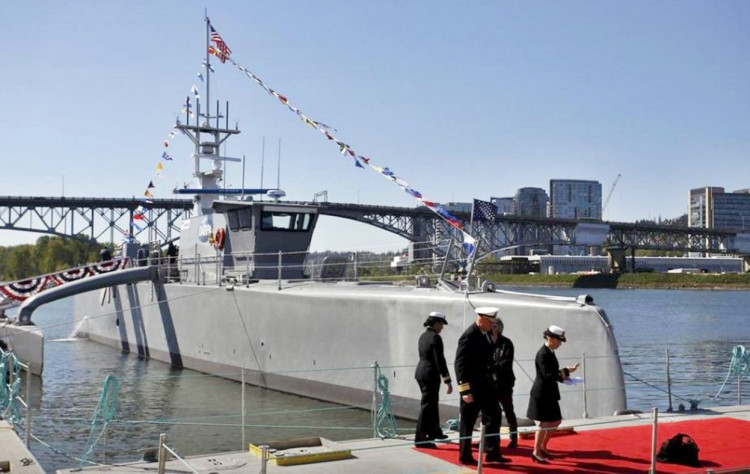The U.S. Navy will meet China's growing challenge to its naval supremacy by building a more lethal future fleet where robotic warships will play a key role in both surface and subsurface warfare.
Secretary of Defense Mark Esper announced an unprecedented plan to expand the Navy by building a new range of unmanned and autonomous ships alongside surface warships, submarines and aircraft to defeat China's naval challenge.
He said this "game-changer" plan will expand the total number of ships in the Navy 355 from the current 293. This plan, which he revealed Wednesday at "Future Forward," a review of U.S. naval power, will require adding tens of billions of dollars to the Navy's budget between now and 2045.
The main goal of this accelerated warship building program will be for the Navy to maintain its superiority over the People's Liberation Army Navy (PLAN), the main threat to U.S. naval supremacy.
"The future fleet will be more balanced in its ability to deliver lethal effects from the air, from the sea, and from under the sea," said Esper.
The naval expansion will see a huge focus on building robotic, or autonomous, ships and optionally manned vessels. Esper confirmed the Navy will build surface and subsurface vessels that can be optionally manned, unmanned or autonomous.
He said trials are underway on the Sea Hunter anti-submarine unmanned surface vehicle (USV). Sea Hunter is a robotic 40 meter-long trimaran that can track and follow Chinese submarines for more than two months at a time.
Upgraded versions of Sea Hunter will also allow these naval drones to destroy the submarines they're hunting with Mk 48 torpedoes. Sea Hunter, the world's first robot warship, can patrol 18,500 km (10,000 nautical miles) of ocean without a human crew.
"These efforts are the next step in realizing our future fleet, one in which unmanned systems perform a variety of warfighting functions, from delivering lethal fire and laying mines, to conducting resupply or surveilling the enemy," according to Esper. "This will be a major shift in how we will conduct naval warfare in the years and decades to come."
He also revealed the Navy will build "more and smaller" surface warships in a bid to expand fleet size in the shortest possible time. More submarines will also enter service, as will a broad range of unmanned carrier-based aircraft or aerial drones.
Soon to enter service with the Navy will be the MQ-25 Stingray refueling drone, the first carrier-launched autonomous unmanned aircraft integrated into the service's strike arm. This drone can later be upgraded into a combat aircraft carrying air-to-air missiles.
Esper said the Future Forward plan will allow Navy warships to survive a high-intensity conflict against China while delivering precision strikes at very long distances. This technology-infused future fleet will also project U.S. power and presence.






